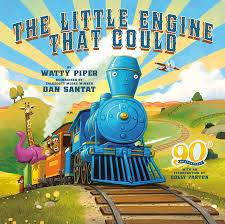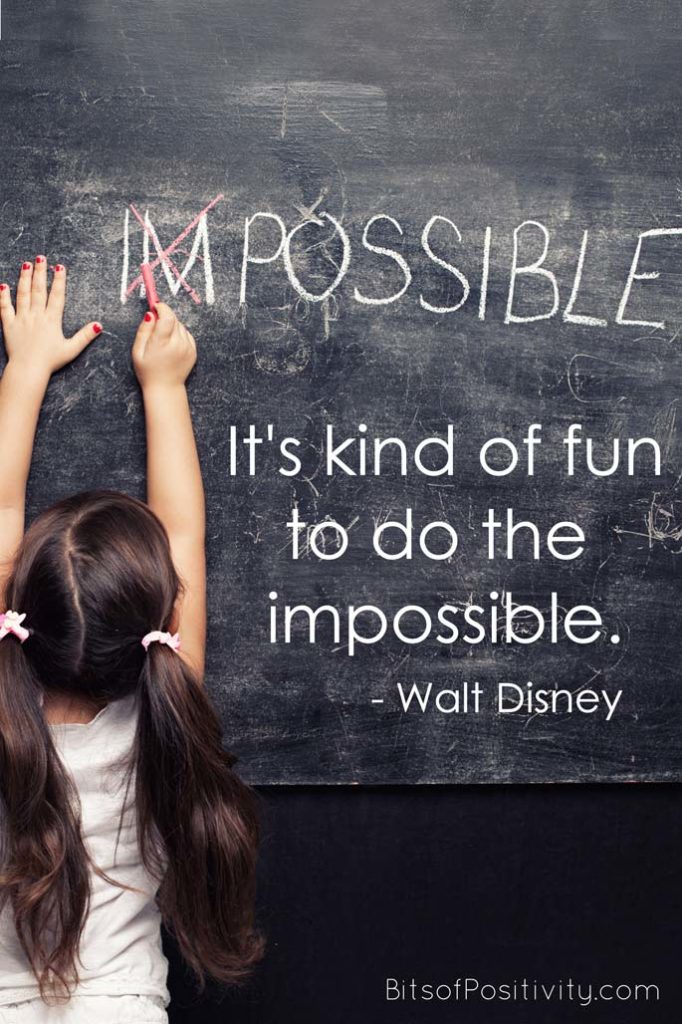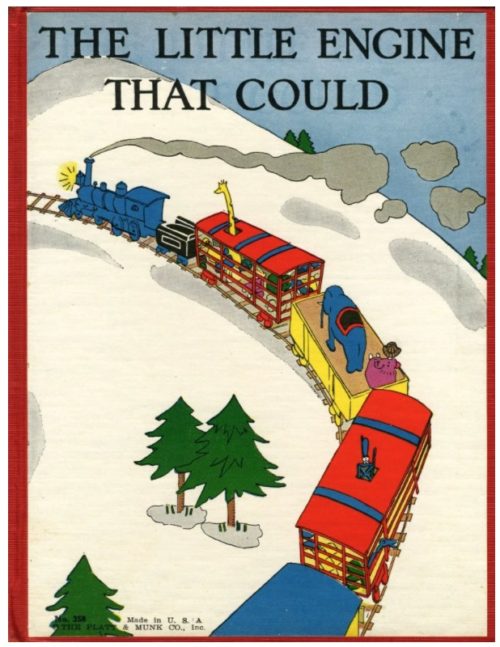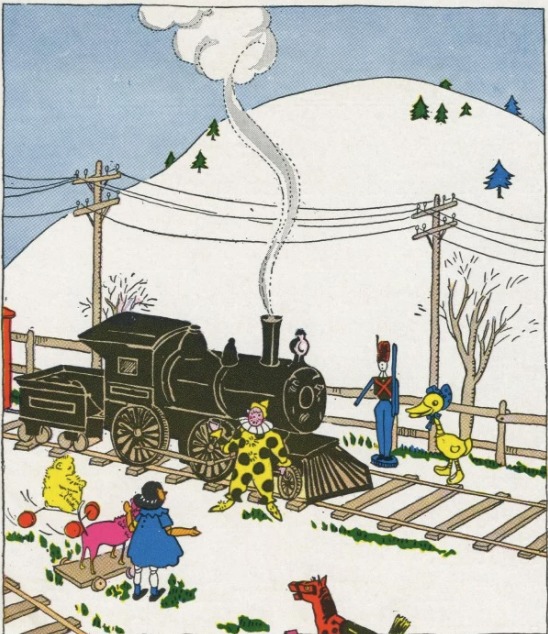
The beloved The Little Engine That Could by Watty Piper (it’s actually a story ‘retold’ entitled The Pony Engine by Mabel C. Bragg) is now available as a 90th Anniversary updated edition. I did a little digging and found an article tracing the history of this book, along with scanned copies of the 1930 and 1954 editions.
I believe the text is identical, but the message is the same:
When the going gets tough, we all need to remember and say the little blue engine’s wise words “I think I can, I think I can…” These are the wise words of the author, Watty Piper—if you read the article linked above, you will see it is a pen name for a successful entrepreneur Arnold Munk, who published the book as owner of Platt and Munk (I guess one could call it one of the first ‘self-published’ books). Voila! These words are an old fashioned version of a ‘growth mindset’.
What’s a ‘growth mindset’?

The term’s originator, Dr. Carol Dweck, states it best via these simple quotes:
“Individuals who believe their talents can be developed (through hard work, good strategies, and input from others) have a growth mindset. They tend to achieve more than those with a more fixed mindset (those who believe their talents are innate gifts).”
“If parents want to give their children a gift, the best thing they can do is to teach their children to love challenges, be intrigued by mistakes, enjoy effort, and keep on learning. That way, their children don’t have to be slaves of praise. They will have a lifelong way to build and repair their own confidence.”
Just like the train with the broken engine, our children need to face challenges, learn by making mistakes, feel free to ask for help, and learn to solve the problems they will undoubtedly face, literacy related or not.
Wouldn’t it be fun to have a look at the newest version, as well as these versions of yore and compare/contrast the illustrations??? Trust me, they are really worth a look—best done with our kids. See if you can just read the words of the story without the illustrations and let your children develop their own imagery and perhaps even draw their own illustrations. Then, compare them to the ones in the first, second, and now this 90th anniversary version, which I suspect will be in libraries if you do not wish to make that purchase or already have an earlier edition.

Original cover 1930 lamination on red cloth 
Original illustration 1930
Who amongst us has never listened and/or read or heard of this classic??
Who amongst us has never recalled this story/the famous line during tough times?? Even something as simple as my biking uphill with my husband always way ahead of me has me sometimes recalling these words!!
Who wouldn’t be charmed by the speaking toys who have children waiting for them on the other side of the mountain?? Here is some of the text, so rich with imagery:
“Her cars were filled full of good things for boys and girls…..Some of the cars were filled with all sorts of good things for boys and girls to eat–big golden oranges, red-cheeked apples, bottles of creamy milk for their breakfasts, fresh spinach for their dinners, peppermint drops, and lollypops for after-meal treats. There were toy animals–giraffes with long necks, Teddy bears with almost no necks at all, and even a baby elephant. Then there were dolls with blue eyes and yellow curls, dolls with brown eyes and brown bobbed heads, and the gayest little toy clown you ever saw.”
(note some of the ‘now archaic’ word choices!!)
–The Little Engine That Could
“She was a happy little train….she puffed along happily. Then all of a sudden she stopped with a jerk. She simply could not go another inch. She tried and she tried, but her wheels would not turn.”
–The Little Engine That Could

Who couldn’t identify with the haughty, condescending larger engines who refuse to help the train car of toys and good things to eat?
It reminded me more than just a little bit of bullying as I reread the text just now. The 90th Anniversary Edition of The Little Engine That Could is now widely available. Remember to keep and promote that positive, growth mindset as we approach the sunny days of summer and the next school year ahead with our children. We sure will get to the top and other side of the many mountains I see ahead.
Be the parent (or teacher!) who forges ahead, saying, “I think I can, I think I can…” and when your children (or students!) achieve success, especially after a series of roadblocks perhaps due to language and/or reading struggles, spelling/writing struggles, math struggles, behavior struggles, or just the additional stress and struggles that hit us all in the face this past year. You will get to the other side of the mountain.
In my work with overwhelmingly struggling children (nearly all who have dyslexia and other issues as well) over the past decades, I have found the vast majority to have reached the mountaintop successfully. These once children are now capable adults who are making positive contributions to society.
You have the capability to be the parent/caregiver or teacher one day who will be on the other side of that mountain. Although the mountain seems very high and you may not see the peak just now, you will reach the other side and say, “I thought I could…I thought I could….I thought I could..” just like that tiny blue engine in Piper’s famous tale, now considered a classic, for 90 years.
Be the parent (or teacher!) who forges ahead, saying, “I think I can, I think I can…”
–LORI JOSEPHSON
Keep the faith and look forward–keep chugging along.